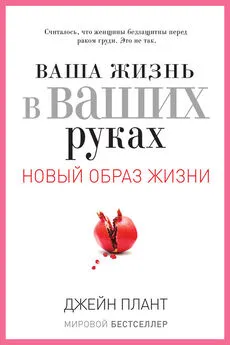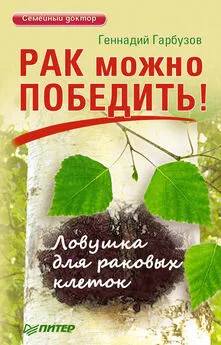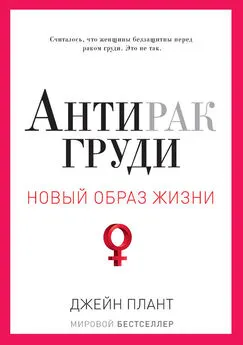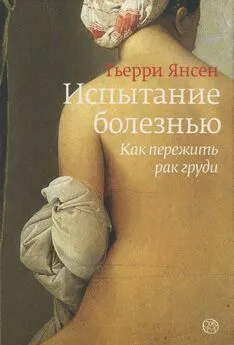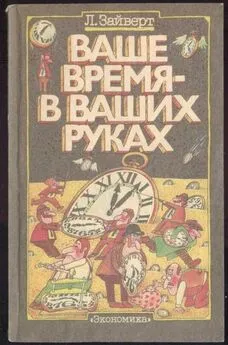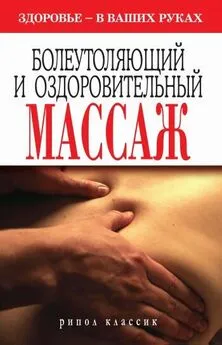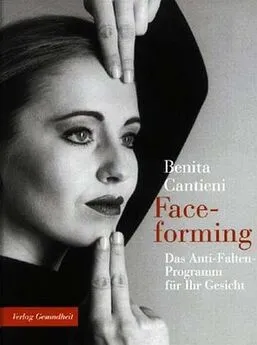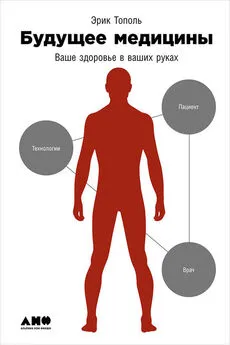Джейн Плант - Ваша жизнь в ваших руках. Как понять, победить и предотвратить рак груди и яичников
- Название:Ваша жизнь в ваших руках. Как понять, победить и предотвратить рак груди и яичников
- Автор:
- Жанр:
- Издательство:Литагент «РИПОЛ»15e304c3-8310-102d-9ab1-2309c0a91052
- Год:2012
- Город:Москва
- ISBN:978-5-386-05255-3
- Рейтинг:
- Избранное:Добавить в избранное
-
Отзывы:
-
Ваша оценка:
Джейн Плант - Ваша жизнь в ваших руках. Как понять, победить и предотвратить рак груди и яичников краткое содержание
Рак груди – непонятная и пугающая тема. Суровые факты шокируют: основная причина смерти женщин от 25 до 75 лет – различные формы рака, и рак молочной железы – один из самых смертоносных. Это современное бедствие уже приобрело характер эпидемии. Но книга «Ваша жизнь в ваших руках» написана не для того, чтобы вы боялись. Напротив, это история о надежде.
Пройдя путь от постановки страшного диагноза к полному выздоровлению, профессор Плант на собственном опыте познала все этапы онкологического лечения, изучила глубинные причины возникновения рака груди и составила программу преодоления и профилактики этого страшного заболевания. Благодаря десяти факторам питания и десяти факторам образа жизни от Джейн Плант ваша жизнь действительно будет в ваших руках.
Ваша жизнь в ваших руках. Как понять, победить и предотвратить рак груди и яичников - читать онлайн бесплатно ознакомительный отрывок
Интервал:
Закладка:
1991. Bombesin stimulates proliferation of human breast cancer cells in culture. Br. J. Cancer , 63 (6), 933–936; Giacchetti, S. and others, 1990. Characterization, in some human breast can-
cer cell lines, of gastrin-releasing peptide-like receptors which are absent in normal breast epithelial cells. Int J Cancer , 46 (2), 293–298; Weber, C.J. and others, 1989. Gastrin-releasing peptide, calcitonin gene-related peptide, and calcitonin-like immu-no-reactivity in human breast cyst fluid and gastrin-releasing peptide-like immunoreactivity in human breast carcinoma cell lines. Surgery, (6), 1134–1139 (disc. 1139–1140).
28. Markwalder, R. and others, 1999. Gastrin-releasing peptide receptors in the human prostate: relation to neoplastic transformation. Cancer Research, 59 (5), 1152–1159; Festuccia, C. and others, 1998. In vitro regulation of pericellular proteolysis in prostatic tumor cells treated with bombesin. Int. J. Cancer, 75 (3); 418–431: Krongrad, A. and others, 1997. Endopeptidase 24.11 activity in the human prostate cancer cell lines LNCaP and PPC-1. Urological Research, 25 (2), 113–116; Jungwirth, A. and others, 1997. LHRH antagonist Cetrolix (SB-75) and bombesin-antagonist RC-3940-II inhibit the growth of androgen-independent PC-3 prostate cancer in nude mice. Prostate, 32 (3), 164–172; Larran, J. and others, 1996. In vitro characterization of bombesin and calcitonin on the proliferation of PC3, DK145 and LNCaP cancer prostatic cell lines. International Journal of Developmental Biology, 1996 (Suppl. 1), 275S-276S; Aprickian, A.G. and others, 1996. Bombesin specifically induces intracellular calcium mobilization via gastrin-releasing peptide receptors in human prostatic cancer cells. Journal of Molecular Endocrinology, 16 (3), 297–306; Bologna, M. and others, 1989. Bombesin stimulates growth of human prostatic cancer cells in vitro. Cancer, 63 (9), 1714–1720; Wasilenko, WJ. and others, 1996. Effects of the calcium influx inhibitor carboxyamido-triazole on the proliferation and invasiveness of human prostate tumor cell lines. Int J Cancer, 68 (2), 259–264.
29. Takeyama, M. and others, 1989. Enzyme immunoassae of gastrin-releasing, peptide (GRP)-like immunoreactivity in milk. Int J Pept Protein Res, 34 (1), 70–74.
30. Ducroc, R. and others, 1995. Immunoreactive substance P and calcitonin-gene-related peptide (CGRP) in rat milk and in human milk and infant formula’s. Am J Clin Nutr, 62 (3), 554–558.
31. Lembeck, F. and others, 1979. Substance P as neurogenic mediator of antidromic vasodilation and neurogenic plasma extravasation. Arch Pharmacol , 310 (2), 175–183.
32. Khare, V K. and others, 1998. The neuropeptide/mast cell secretagogue substance F is expressed in cutaneous melano-cyticlesion s. Journal of Cutaneous Pathology , 25 (1), 2-10.
33. Ducroc, R. and others, 1995. Immunoreactive substance P and calcitonin-gene-related peptide (CGRP) in rat milk and in human milk and infant formula’s. Am J Clin Nutr , 62 (3), 554–558.
34. Faulkner, A., 1998. Insulin-like growth factor 1 concentrations in milk and plasma after growth hormone treatment. Biochemical Society Transactions , 26 (4), 386; Silanikove, N. and others, 1998. Metabolic and productive response of dairy cows to increased ion supplementation at early lactation in warm weather. Journal of Dairy Research , 65 (4), 529–543; Ginjala, V. and others, 1998. Determination of transforming growth factor-beta 1 (TGF-beta 1) and insulin-like growth factor-1 (IGF-1) in bovine colostreum samples. Journal of Immunoassay , 19 (2–3), 195–207; Schober, D.A. and others, 1990. Perinatal expression of type 1 IGF receptors in porcine small intestine. Endocrinology , 126 (2), 1125–1132.
35. Rao, R.K. and others, 1998. Luminal stability of insulin-like growth factor-1 and -2 in developing rat gastrointestinal tract. Journal of Pediatric Gastroenterology and Nutrition , 26 (2), 179–185.
36. Parisot, J.P. and others, 1999. Altered expression of the insulinlike growth factor-1 receptor in a tamoxifen-resistant human breast cancer cell line. Br J Cancer , 79 (5–6), 693–700; Sciacca, L. and others, 1999. Insulin receptor activation by insulin-like growth factor-2 in breast cancers: evidence for a new autocrine/paracrine mechanism. Oncogene , 18 (15), 2471–2479; Grothey, A. and others, 1999. The role of insuline-like growth factor and its receptor in cell growth transformation, apopto-sis, and chemoresistance In solid tumor s. Journal of Cancer Research and Clinical Oncology , 125 (3–4), 166–173; Perks, C. M. and others, 1999. Activation of integrin and ceramide signalling pathways can inhibit the mitogenic effect of insulin-like growth factor-1 (IGF-1) in human breast cancer cell lines. Br J Cancer , 79 (5–6), 701–706; de Cupis, A. and others, 1998. Responsiveness to hormone, growth factor and drug treatment of a human breast cancer cell line; comparison between early and late cultures. In Vitro Cellular and Developmental Biology – Animal , 34 (10), 836–843; Kobari, M. and others, 1998. The inhibitory effect of an epidermal growth factor receptor specific tyrokinase inhibitor on pancreatic cancer cell lines was more potent than inhibitory antibodies against the receptors for EGF and IGF-1. International Journal of Pancreatology , 24
(2), 85–95; Gooch, J.L. and others, 1998. Interleukin 4 inhibits growth and induces apoptosis in human breast cancer cells. Cancer Res , 58 (18), 4199–4205; Choki, I. and others, 1998. Osteobiast-derived growth factors enhance adriamycin-cytos-tasis of MCF-7 human breast cancer cells. AnticancerRes , 18 (16A), 4213–4224; Jackson, J.G. and others, 1998, Insulin receptor substrate-1 is the predominant signalling molecule activated by insulin-like growth factor-1, insulin, and interleukin-4 in estrogen receptor-positive human breast cancer cells. Journal of Biological Chemistry , 273 (16), 9994-10 003; Westley,
B.R. and others, 1998. Interactions between the oestrogen and IGF signalling pathways in the control of breast epithelial cell proliferation. Biochemical Society Symposium , 63, 35–44; Sur-macz, E. and others, 1995. Overexpression of insulin receptor substrate 1 (IRS-1) in the human breast cancer cell line MCF-7 induces loss of estrogen requirements for growth and transformation. Clinical Cancer Research, 1 (11), 1429–1436.
37. Untersasser, G. and others, 1999. Proliferative disorders of the aging human prostate: involvement of protein hormones and their receptors. Experimental Gerontology , 34 (2), 275–287; Xu, Z.D., 1999. Hammerhead ribozyme-mediated cleavage of the human insulin-like growth factor-2 ribonucleic acid in vitro and in prostate cancer cells. Endocrinology, 140 (5), 2134–2144; Marelli, M.M. and others, 1999. Luteinizing hormone-releasing hormone agonists interfere with the antagonic activity of the insulin-like growth factor system in androgen-dependent prostate cancer cells. Endocrinology , 140 (1), 329–334; Larnharzi, N. and others, 1998. Growth hormone-releasing hormone antagonist MZ-5-156 inhibits growth of DY-145 human androgen-independent prostate carcinoma in nude mice and suppresses the levels and mRNA expression of insulin-like growth factor-2 in tumors. Proc Natl Acad Sei USA , 95 (15), 8864–8868; Wang, Y.Z. and others, 1998. Sex hormone-induced prostatic carcinogenesis in the noble rat; the role of insulin-like growth factor-1 (IGF-1) and vascular endothelial growth factor (VEGF) in the development of cancer. Prostate , 35 (3), 165–177.
38. He, Y., 1999. Comment on the Association between Insulin-Like Growth Factor-1 (IGF-I) and Bone Mineral Density: Further Evidence Linking IGF-I to Breast Cancer Risk. Journal of Cellular Endocrinology and Metabolism , 84, 1760.
39. Perks, C. M. and Holly, J.M.P., 2000, Insulin-Like Growth Factor Binding Proteins (IGFBPs) in Breast Cancer. Journal of Mammary Gland Biology and Neoplasia , 5, 75–84.
40. Murphy, M.S. and others, 1998. Growth factors and the gastrointestinal tract. Nutrition, 14 (10), 771–774; Buts, J.F., 1998, Bioactive factors in milk, (in French.) Archives de Pediatrie , 5 (3), 298–306.
41. Shen, WH. and others, 1998. Stability and distribution of orally administered epidermal growth factor in neonatal pigs. Life Sciences , 63 (10), 809–820; Rao, R.K. and others, 1998. Bovine milk inhibits proteolytic degradation of epidermal growth factor in human gastric and duodenal lumen. Peptides , 19 (3), 495–504; McCuskey, R.S. and others, 1997. Effect of milk-borne epidermal growth factor on the hepatic microcirculation and Kupfer cell function in suckling rats. Biology of the Neonate , 7 (3), 202–206; Oguchi, S. and others, 1997. Growth factors in breast milk and their effect on gastrointestinal development. Chang Hua Min Kuo Hsiao Ehr Ко I Hsuek Tsa Chih , 38 (5), 332–337.
42. Salomon, D.S. and others, 1999. Cripto: a novel epidermal growth factor (EGF)-related peptide in mammary gland development and neoplasia. Bioessays , 21 (1), 61–70; Chou, YC. and others, 1999. Induction of mammary carcinomas by N-meth-yl-N-nitrosurea in ovariectomized rats treated with epidermal growth factor. Carcinogenesis , 20 (4), 677–684; Kurtz, A. and
others, 1998. Local control of mammary gland differentiation: mammary-derived growth inhibitor and pleiotrophin. Biochemical Society Symposium , 63, 51–69; Taylor, M.R. and others, 1997. Lactadherin (formerly BA46); a membrane-associat-ed gycoprotein expressed in human milk and breast carcinomas, promotes Arg-Gly-Asp (RGD)-dependent cell adhesion. DNA and Cell Biology , 16 (7), 861–869.
43. Zhau, H.J. and others, 1996. Androgen-depressed phenotype in human prostate cancer. Proc. Natl. Acad. Sei. U.S.A., 93 (26), 15 152-15 157.
44. Thornburg, W. and others, 1984. Gastrointestinal absorption of epidermal growth factor in suckling rats. American Journal of Physiology , 246, G80—G85.
45. www.prostatepointers.org/cmyers/pf0696.html
46. Gaull, G.E. and others, 1985. Significance of growth modulators in human milk. Pediatrics , 75 (2), 142–145.
47. Delgrange, E. and others, 1997. Sex related differences in the growth of prolacrinomas: a clinical and proliferation marker study. Journal of Clinical Endocrinology and Metabolism. 82 (7), 2102–2107.
48. Vonderhaar, B.K., 1998, Prolactin: The forgotten hormone of human breast cancer. Pharmacology and Therapeutics , 79 (2), 169–178; Das, R. and others; 1996. Involvement of SHC, GRB2, SOS and RAS in prolactin signal transduction in mammary epithelial cells. Oncogene , 13 (6), 1139–1145; Mershon, J, and others, 1995. Prolactin is a local growth factor in rat mammary tumors. Endocrinology , 136 (8), 3619–3623; Ginsberg, E. and others, 1995. Prolactin secretion by human breast cancer cells. Cancer Res , 55 (12), 2591–2595; Fuh, G. and others, 1995. Prolactin receptor antagonists that inhibit the growth of breast cancer cell lines. J Biol Chem , 270 (22), 13 133-13 137.
49. Leav, I. and others, 1999. Prolactin receptor expression in the developing human prostate and in hyperplastic, dysplastic, and neoplastic lesions. American Journal of Pathology , 154 (3), 863–870; Horti, J. and others, 1998. A phase 2 study of bromocriptine in patients with androgen-independent prostate cancer. Oncology Reports , 5 (4), 893–896; Franklin, R.B. and others, 1997. Prolactin regulation of mitochondrial aspartate aminotransferase and proteinkinase С Molecular and Cellular Endocrinology , 127 (1), 19–25; Janssen, T. and others, 1996. In vitro characterization of prolactin-induced effects on proliferation in the neoplastic LNCaP, DU145, and PC3 models of the human prostate. Cancer , 77 (1), 144–149; Janssen, T. and others, 1995. Organ culture of human tissue as study model of hormonal and pharmacological regulation of benign prostatic hyperplasia and of prostatic cancer, (frans) Acta Urol Belg , 63 (1), 7-14; Oliver, R.T. and others, 1995. New directions with hormone therapy in prostate cancer: possible benefit from blocking prolactin and use of hormone treatment intermittently in combination with immunotherapy. Eur J Cancer , 31A (6), 859–860; Rana, A. and others, 1995. A case for synchronous reduction of testicular androgen, adrenal androgen and prolactin for the treatment of advanced carcinoma of the prostate. Eur J Cancer , 31A (6), 871–875.
Читать дальшеИнтервал:
Закладка:
